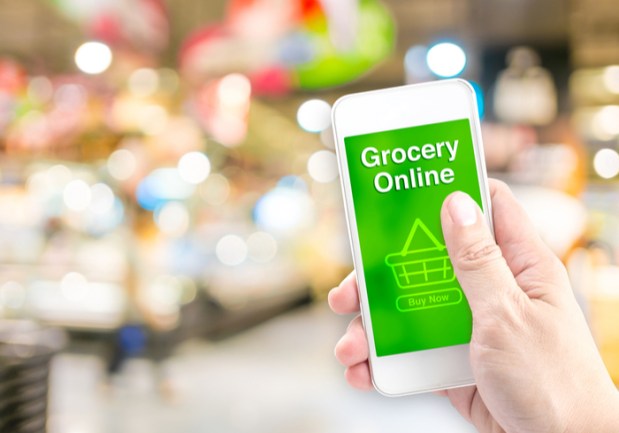How Smaller Grocers Can Tap Into Digital Offerings

With Amazon, Kroger and other large retailers in the grocery business introducing digital technology, such as mobile self-checkout, how do smaller regional grocers compete?
The answer could be in white-label technology platforms provided by companies such as GrocerKey, a software company that helps brick-and-mortar retailers adapt to the new digital world. Offered on a software-as-a-service (SaaS) platform, GrocerKey’s solution encompasses online and mobile shopping, store-based picking, and delivery-management capabilities. In all, the company offers several modules that retailers can use depending on their needs.
GrocerKey Founder and CEO Jeremy Neren told PYMNTS.com in an interview, “The retailer can leverage each of the modules that pertain to them.”
The Market
GrocerKey primarily works with mid- to large-sized independent and regional chains. But that doesn’t mean the platform can’t serve the needs of other retailers.
“The platform is designed to work for retailers of all sizes,” Neren said.
Still, Neren is focused on large independent and regional grocers. These retailers may not have fully tapped into the potential of digital technology, after all.
“There [are] still a lot of them out there that either haven’t done much digitally or [are] unhappy with their current solution,” Neren said.
But some larger retailers have made a big digital push. In 2015, for example, Kroger announced the launch of 84.51° — its data-analytics arm focused on creating better consumer-engagement strategies. The name is a nod to the location of Kroger’s Cincinnati headquarters and is, by design, unusual, according to 84.51° CEO Stuart Aitken.
“84.51° is founded on the principle that building the bottom line should be a result, not the primary objective,” Aitken said. “We want everything we do — every decision we make — to be about the customer and what that person wants. To do that, our associates navigate the complex data landscape to reveal relevant customer patterns.”
Reaching out to embrace those “relevant patterns” has led Kroger to rapidly reset its consumer-facing offerings quicker than its competition.
Mobile Self-Checkout
To help make the customer experience more enjoyable, GrocerKey enables retailers to offer such services as mobile self-checkout. The experience comes as consumers want a faster and less interactive in-store experience.
“They really just want to buy the product and get out of the store,” said Neren. “They don’t love the human interaction, and they don’t love waiting in line.”
And the service benefits grocers by saving on labor costs. That can go a long way with grocers who compete in a low-margin business.
To help prevent loss through mobile self-checkout, GrocerKey does offer auditing tools. But “that is ultimately a strategic decision the retailer can make,” Neren said.
Some retailers would argue that they have shrink problem regardless, so they would simply forgo auditing for mobile self-checkout to make for a more frictionless shopping experience. Other retailers, that do want to audit mobile self-checkout orders, could use GrocerKey to set rules based on previous interactions.
The feature comes as mobile self-checkout is catching on with larger retailers. At the Amazon Go store in Seattle, for example, the shopping is done via mobile app and customers get to leave with what they’ve bought without having to wait to checkout.
No cashiers, no lines and, therefore, speedier transactions. It’s all about the cameras and sensors working in conjunction with mobile devices held by consumers’ record purchases. Upon exit of the store, shoppers receive a receipt via phone. Amazon calls it “Just Walk Out.”
The coolness factors are at play, where speed and streamlined experiences are key. The shoppers focus on shopping, while Amazon does all the work.
The Road Ahead
In the future, GrocerKey is working to integrate a connected device with voice-recognition features. “It’s a dedicated device that would live in the customer’s kitchen that has voice recognition capability and scan-to-cart capability,” said Neren.
Separately, GrocerKey is looking at integrations with Amazon’s Alexa and Google Home to leverage the frictionless shopping opportunities those solutions provide. But, regardless of the integration, Neren said that 51 percent of in-store transactions are influenced by digital technology. As a result, grocers could be well-served by tapping into digital technology.
“As a retailer, why not offer your customer more digital channels to interact with your store?” Neren said.
